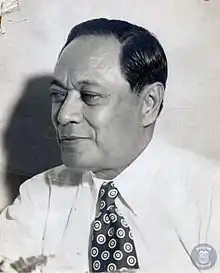| ||||||||||||||||||||||
All 92 seats in the House of Representatives of the Philippines 47 seats needed for a majority | ||||||||||||||||||||||
|---|---|---|---|---|---|---|---|---|---|---|---|---|---|---|---|---|---|---|---|---|---|---|
| ||||||||||||||||||||||
| ||||||||||||||||||||||
 |
|---|
|
|
Elections for the members of the House of Representatives were held on June 5, 1934 pursuant to the Philippine Organic Act of 1902, which prescribed elections for every three years. The ruling Nacionalista Consolidado was split anew into two factions: the Democrata Pro-Independencias who were in favor of the Hare–Hawes–Cutting Act (the "Pros"), and the Democraticos who were against it (the "Antis"). The "Antis" were led by then-Senate President Manuel L. Quezon while the "Pros" were led by then-Senator Sergio Osmeña. The "Antis" won in the House while the "Pros" won in the Senate.
Results
|
| Party | Seats | +/– | |
|---|---|---|---|
| Nacionalista Democratico | 70 | New | |
| Nacionalista Democrata Pro-Independencia | 19 | New | |
| Sakdalista | 3 | New | |
| Total | 92 | +6 | |
| Source: Julio Teehankee. "Electoral Politics in the Philippines" (PDF). quezon.ph. & Philippine Electoral Almanac Revised And Expanded. Presidential Communications Development & Strategic Planning Office. 2015. | |||
Note
- A. ^ The combined number of seats of the Nacionalista Party before it was divided into two factions.
References
- Paras, Corazon L. (2000). The Presidents of the Senate of the Republic of the Philippines. ISBN 971-8832-24-6.
- Pobre, Cesar P. (2000). Philippine Legislature 100 Years. ISBN 971-92245-0-9.
- Teehankee, Julio. "Electoral Politics in the Philippines" (PDF). quezon.ph. Retrieved 2010-12-06.
This article is issued from Wikipedia. The text is licensed under Creative Commons - Attribution - Sharealike. Additional terms may apply for the media files.

